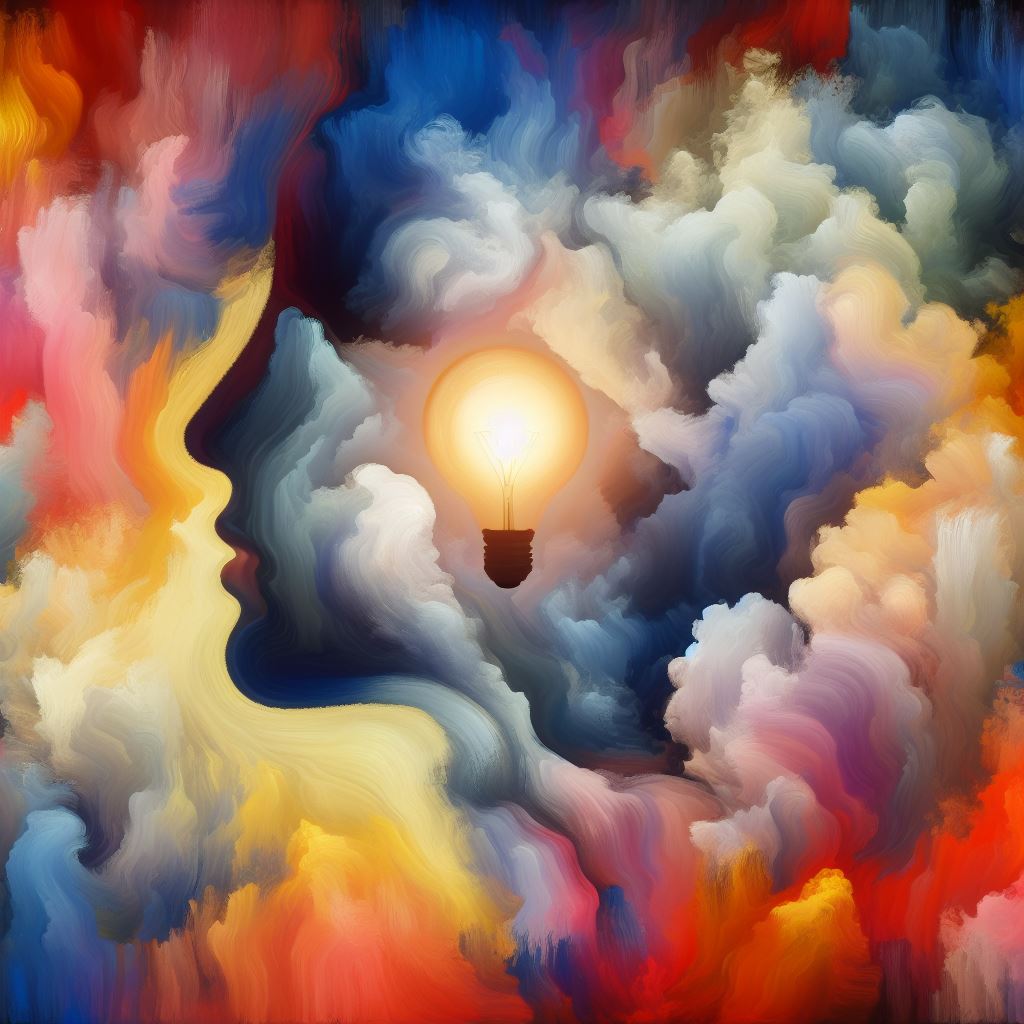The Truth - Illusion of Consciousness

Previously, it was mentioned that there are five types of human consciousness: visual, auditory, olfactory, gustatory, and tactile. In addition to these, there is another type of consciousness that can be generated without the need for external real-time stimuli, which is the inner consciousness (mind) and the thoughts generated by events. This is temporarily named as "consciousness of intention."
Therefore, humans have a total of six types of consciousness (visual, auditory, olfactory, gustatory, tactile, consciousness of intention), each generated by six senses (eyes, ears, nose, tongue, body, inner consciousness or mind) and corresponding six entities (light, sound, smell, taste, touch, events).
Let's start with the principle of a television set. As mentioned earlier, the light in a television picture is produced jointly by the television set and the electromagnetic waves. So, when light appears, it indicates that the television set and the electromagnetic waves have successfully interacted. Obviously, it is not the light that illuminates the television set and the electromagnetic waves, but rather the light depends on them for its existence. The television set and the electromagnetic waves are the prerequisites and causes for the light, while the light is the product and result of the television set and the electromagnetic waves.
The same goes for vision. Eyes and light produce vision. It is not that vision sees the eyes and light, or that the eyes see the light, but vision depends on the eyes and light for its existence. The eyes and light are the prerequisites and causes for vision, while vision is the product and result of the eyes and light.
Audition, olfaction, gustation, tactility, and consciousness of intention follow the same principle. It is not that consciousness perceives the senses and entities, or that the senses perceive the entities, but rather consciousness depends on the senses and entities for its existence. The senses and entities are the prerequisites and causes for consciousness, while consciousness is the product and result of the senses and entities.
However, people often understand that light cannot actively illuminate electromagnetic waves, yet they always believe that consciousness can actively perceive entities. Through the previous analysis, it is clear that when consciousness arises from the interaction of the senses and entities, consciousness is merely a result of their interaction, a new, independent, non-autonomous, non-living, passively arising natural product.
When consciousness arises, the fact of perception has already been achieved. At this point, the senses and entities have already interacted. This consciousness does not need to return to perceive the entity, nor does it need or even can perceive other entities. Because when other consciousness arises, it is also due to the conditions of other senses and entities.
The generation of these consciousnesses does not require an active perceiver or an object to be perceived. The whole process is just A + B = C. Whether people are willing or not, when the conditions of both senses and entities are present, this process will naturally occur, without the need to add anything else to actively see, hear, smell, taste, touch, or think.
Just like fuel and oxygen burning to produce flames, when flames appear, it indicates that the burning phenomenon has occurred. There is no need to add an active burner, as the flames are just the result of the interaction between the first two, and the entire burning phenomenon is just the process of fuel + oxygen = flames.
Therefore, whether within or outside consciousness or the body, there is nothing that has the function of seeing, hearing, smelling, tasting, touching, or thinking. These consciousnesses are all newly generated, independent, non-autonomous, non-living, passively arising natural products that arise from the interaction of the senses and entities. When these consciousnesses arise, it is the act of seeing, hearing, smelling, tasting, touching, or thinking.
The relationship between them is like that of a television or a movie. When light appears, it signifies the appearance of the program content; they are two sides of the same coin. Consciousness is the same. When visual consciousness arises, it is the arising of what is seen; when auditory consciousness arises, it is the arising of what is heard; when other consciousness arises, it is the arising of what is known. They are two sides of the same coin.
However, people are ignorant of this and mistakenly divide consciousness into two parts, believing that consciousness is one thing and its content is another, connected by the function of perception. This leads to the illusion that consciousness can perceive entities.
Based on this illusion, most people consider the perceived entities as real, while others believe that the perceived entities are false, illusory, and so on. Regardless of whether the perceived entities are considered real or false, these viewpoints are built on the illusion that consciousness or something else can perceive entities.
(To be continued...)